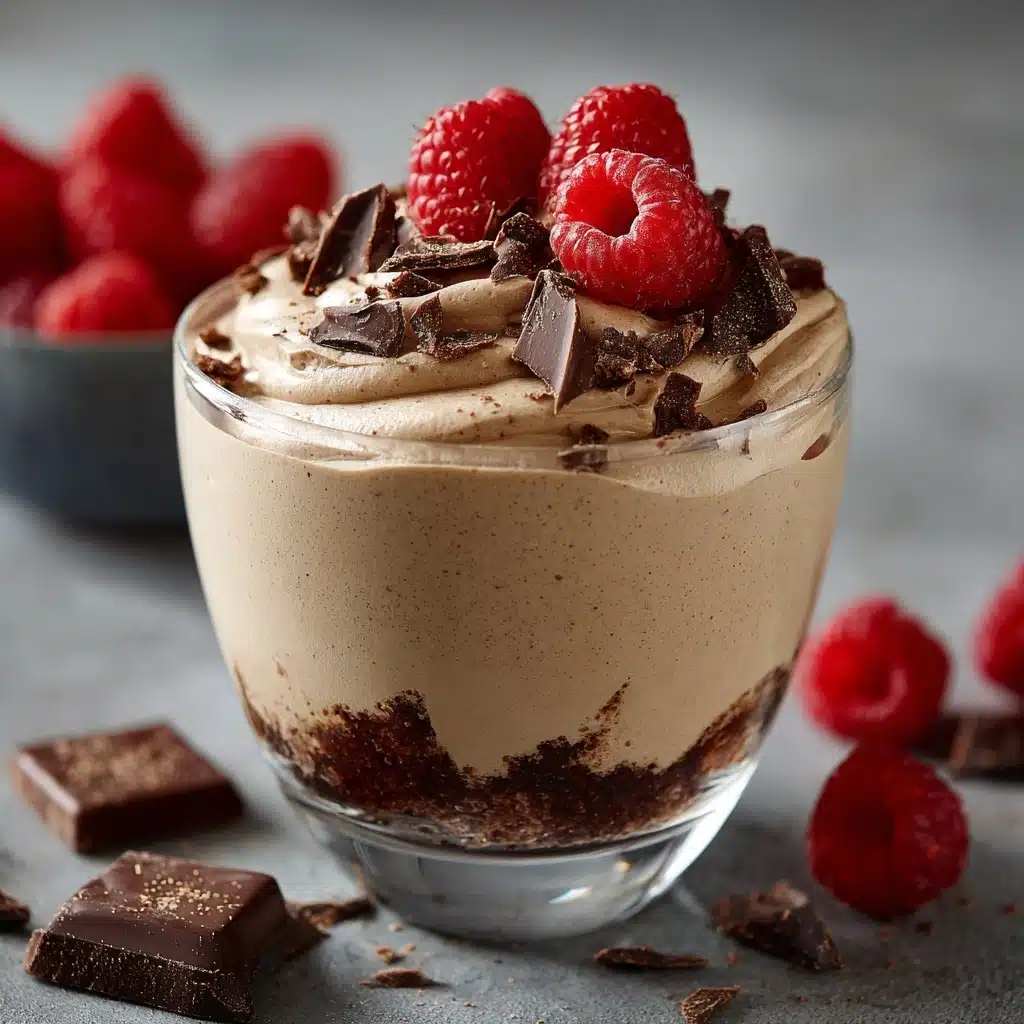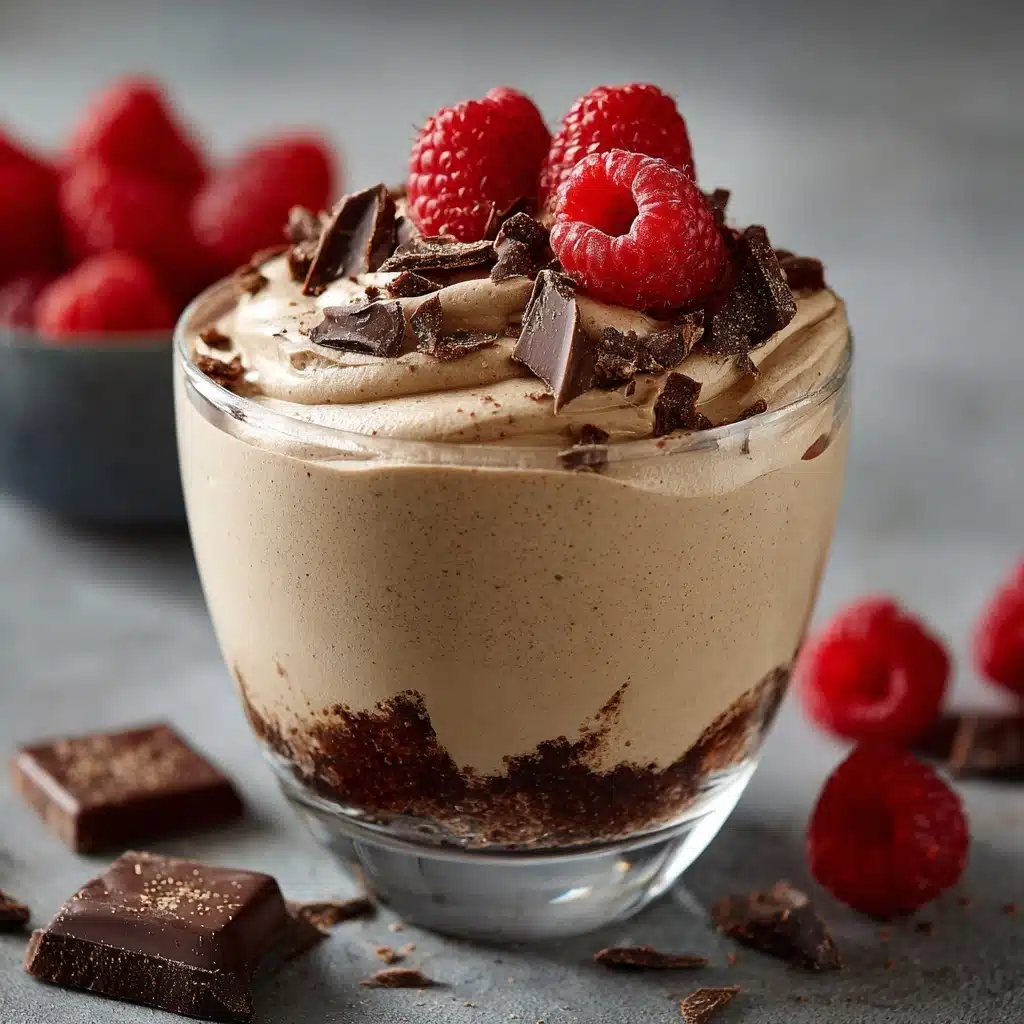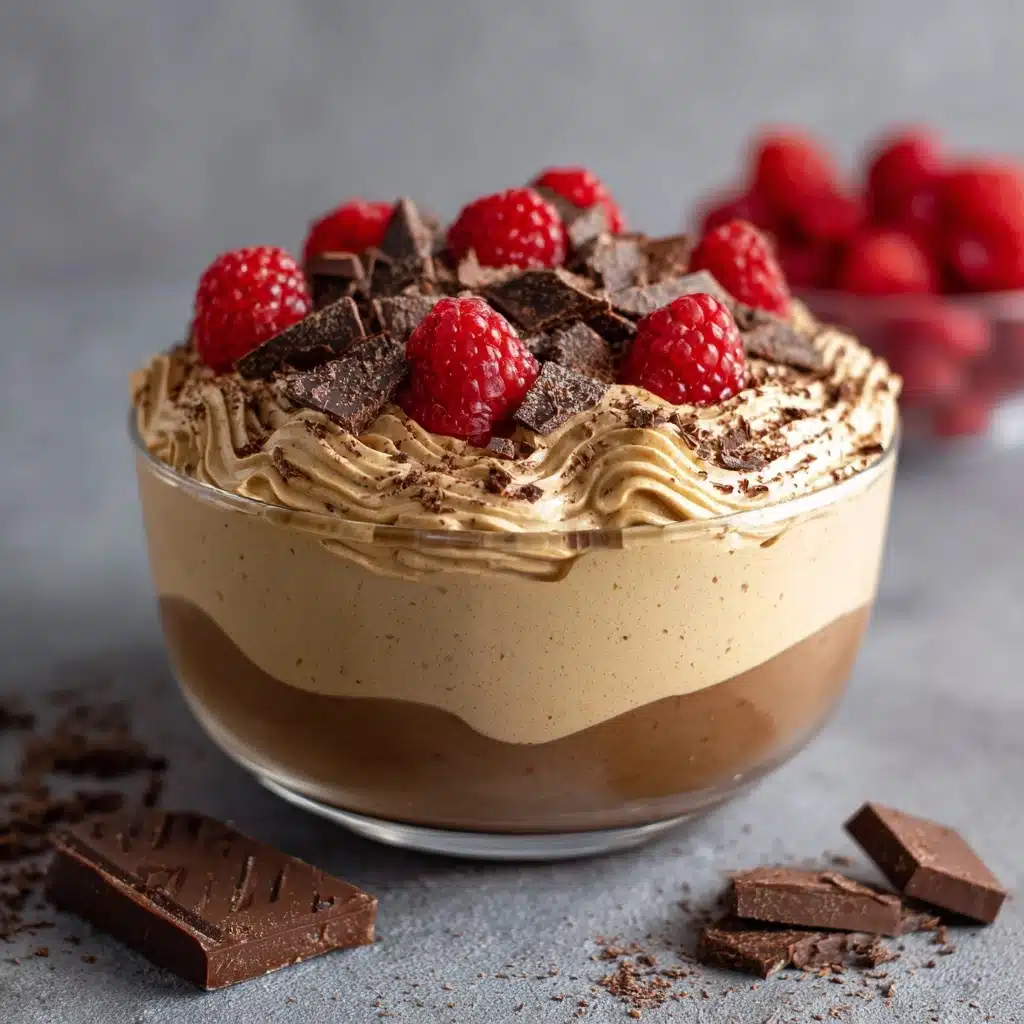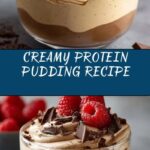If you’re looking for an easy, satisfying treat that doubles as a smart snack, Protein Pudding: High Protein, Low Effort is about to become your new favorite. With a silky, creamy texture and a richness reminiscent of real-deal dessert, this pudding packs a hefty protein punch while keeping things wholesome and incredibly simple to make. Whether you’re sneaking in a quick breakfast, powering through an afternoon slump, or treating yourself after dinner, this recipe shows that eating well can be deliciously effortless.
Ingredients You’ll Need
The beauty of Protein Pudding: High Protein, Low Effort is its minimal ingredient list, where every single item makes a difference in flavor, texture, or nutritional value. Let’s break down what you’ll need, and exactly what each ingredient brings to the table.
- Unsweetened almond milk (2 cups): A creamy, neutral base that keeps the pudding dairy-free and light, though any milk will work just as well.
- Protein powder (2 scoops, chocolate or vanilla): The star player for that high protein content and plenty of flavor—choose your favorite to set the tone.
- Unsweetened cocoa powder (1/4 cup, if making chocolate): For those rich, chocolatey vibes; totally optional if you prefer vanilla.
- Chia seeds (1/4 cup): These little powerhouses naturally thicken the pudding and add a fantastic boost of fiber.
- Maple syrup or sweetener of choice (2–3 tablespoons, optional): A touch of sweetness to balance all that protein—totally customizable to your taste and dietary needs.
- Vanilla extract (1 teaspoon): Adds a subtle warmth and brings all the flavors together.
- Pinch of salt: Just enough to sharpen and highlight each ingredient’s flavor (don’t skip this—it makes a difference!).
How to Make Protein Pudding: High Protein, Low Effort
Step 1: Whisk the Base
Start by pouring your almond milk into a large mixing bowl. Add the protein powder, cocoa powder if using, maple syrup or your chosen sweetener, vanilla extract, and that critical pinch of salt. Whisk everything together until smooth—no lumps allowed! This step ensures the pudding’s texture is dreamy and every bite is packed with flavor.
Step 2: Stir in the Chia Seeds
Now it’s time for the magic makers. Add the chia seeds to your smooth mixture, then stir thoroughly until they’re evenly distributed. Chia seeds will swell and thicken everything as they sit, transforming your liquid base into a luscious, pudding-like treat.
Step 3: Refrigerate to Set
Cover your bowl (plastic wrap or a tight-fitting lid works great) and pop it into the fridge. Let it chill for at least two hours—overnight is even better if you’re prepping ahead. After about 30 minutes, give the pudding another good stir to make sure the chia seeds don’t clump. The longer it rests, the thicker and creamier the result.
Step 4: Serve and Savor
Once your Protein Pudding: High Protein, Low Effort is set, give it one last stir before scooping into bowls or jars. Now comes the fun part—garnish and make it yours! Each bite is creamy, rich, and supremely satisfying.
How to Serve Protein Pudding: High Protein, Low Effort

Garnishes
Elevate every spoonful with a sprinkle of toppings—think fresh berries, a flourish of nut butter, or a handful of chopped nuts for extra crunch. Shaved dark chocolate or toasted coconut are also terrific for a little pizzazz. These extras take Protein Pudding: High Protein, Low Effort from simple snack to impressive dessert in less than a minute.
Side Dishes
Protein Pudding: High Protein, Low Effort loves company. Pair it with sliced bananas, apple wedges, or a crisp granola for a filling breakfast bowl. For a more indulgent spread, serve with biscotti, graham crackers, or even alongside other fruit-based desserts for a protein-powered treat platter.
Creative Ways to Present
Try layering your pudding with fruit and granola in mason jars for a grab-and-go breakfast, or pipe it into fancy glasses for a dinner party-worthy dessert. You can even freeze small portions in popsicle molds for a fun, cold high-protein snack. Presentation can be as playful or polished as you like—it’s all about enjoyment.
Make Ahead and Storage
Storing Leftovers
Store any leftover Protein Pudding: High Protein, Low Effort in an airtight container in the refrigerator for up to 5 days. The texture actually improves as it sits, becoming even creamier. If you notice the pudding thickening too much, simply stir in a splash of your favorite milk before serving.
Freezing
This pudding freezes surprisingly well! Scoop portions into freezer-safe containers (or even popsicle molds). When you’re ready to enjoy, thaw overnight in the fridge or eat partially frozen for a frosty, ice cream-like treat. Freezing is a wonderful way to meal prep your snacks for the week.
Reheating
Since Protein Pudding: High Protein, Low Effort is meant to be enjoyed chilled, there’s no need to reheat! If you find it’s straight from the freezer and a bit too solid, let it sit at room temperature for 10–15 minutes before eating. Give it a good stir for the best creamy consistency.
FAQs
Can I use a different type Snack, Dessert
Absolutely! While unsweetened almond milk is a popular choice, any milk—dairy or plant-based—will work in Protein Pudding: High Protein, Low Effort. Just be mindful of the flavor and creaminess changes; oat milk and coconut milk both create especially rich, delicious results.
Can I blend the pudding instead of mixing by hand?
You can! Blending the pudding before chilling breaks down the chia seeds for an ultra-smooth, mousse-like texture. This is a great option if you’re not a fan of chia’s unique bite, and it also helps everything set faster and more evenly.
How can I make my pudding sweeter without added sugar?
If you’re looking to keep things naturally sweet, try blending in a ripe banana or a handful of pitted dates. Both options add a more subtle, whole-food sweetness and pair beautifully with chocolate or vanilla protein powders.
Is this pudding good for meal prep?
Definitely! Since Protein Pudding: High Protein, Low Effort gets even better with time in the fridge, it’s perfect for meal prepping a week’s worth of breakfasts or snacks. Divide into single-serve containers and grab whenever you need a nourishing pick-me-up.
Can I make this without protein powder?
Yes, though it won’t deliver the same protein boost that makes this such a standout. If you skip the protein powder, you might want to increase the cocoa powder or add a bit of Greek yogurt for a similar creamy effect. Adjust the sweetness to taste if needed.
Final Thoughts
Protein Pudding: High Protein, Low Effort truly lives up to its name—every spoonful feels like a little win for your taste buds and your body. Whether you’re new to high-protein treats or already a fan, I hope you’ll give this easy, nourishing pudding a try and find it as irresistible as I do!
PrintProtein Pudding: High Protein, Low Effort Recipe
Indulge in a guilt-free treat with this Protein Pudding recipe. Packed with high protein and low effort, it’s a perfect snack or dessert option.
- Prep Time: 5 minutes
- Cook Time: 0 minutes
- Total Time: 2 hours 5 minutes
- Yield: 4 servings 1x
- Category: Snack, Dessert
- Method: No-Cook
- Cuisine: American
- Diet: Vegetarian
Ingredients
Protein Pudding:
- 2 cups unsweetened almond milk (or milk of choice)
- 2 scoops chocolate or vanilla protein powder
- 1/4 cup unsweetened cocoa powder (if making chocolate)
- 1/4 cup chia seeds
- 2–3 tablespoons maple syrup or sweetener of choice (optional)
- 1 teaspoon vanilla extract
- Pinch of salt
Instructions
- Whisk Ingredients: In a large mixing bowl, whisk together almond milk, protein powder, cocoa powder (if using), maple syrup, vanilla, and salt until smooth.
- Add Chia Seeds: Stir in chia seeds until evenly distributed.
- Chill: Cover and refrigerate for at least 2 hours, stirring once after the first 30 minutes to prevent clumping.
- Serve: Stir again before serving.
Notes
- Top with fresh berries, nut butter drizzle, or chopped nuts for extra flavor and texture.
- For a smoother pudding, blend the mixture before refrigerating to break down the chia seeds.
Nutrition
- Serving Size: 1/2 cup
- Calories: 150
- Sugar: 4 g
- Sodium: 150 mg
- Fat: 5 g
- Saturated Fat: 1 g
- Unsaturated Fat: 4 g
- Trans Fat: 0 g
- Carbohydrates: 13 g
- Fiber: 7 g
- Protein: 15 g
- Cholesterol: 0 mg




